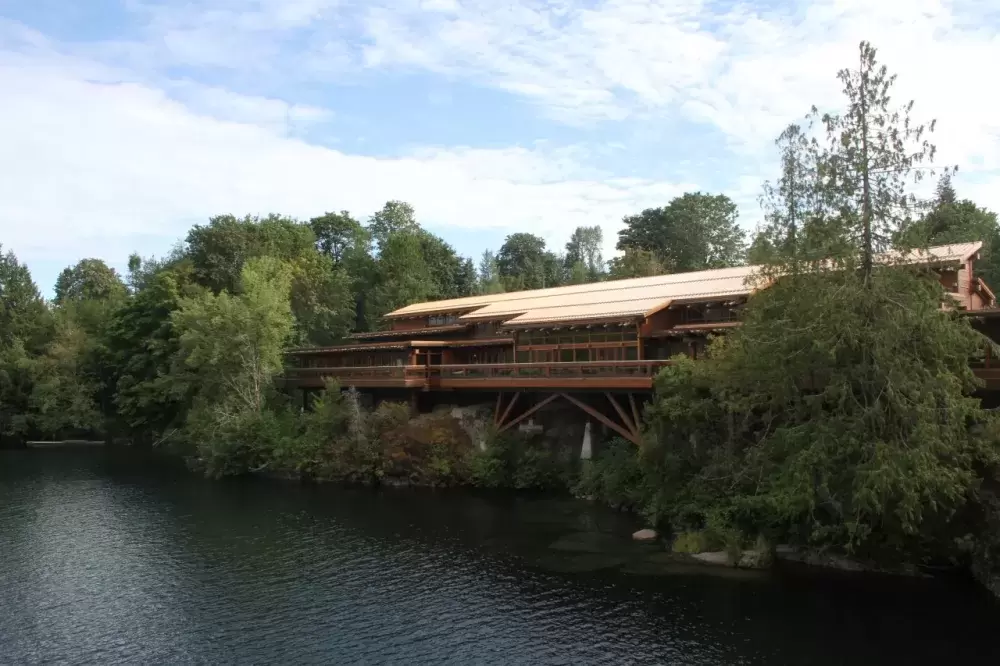It took some time but filling out a grant application last year finally paid off for the Tseshaht First Nation.
In 2019 Tseshaht Executive Director, Darren Mead-Miller, who worked in partnership with Urban Systems, sent in an application to the Rural Dividend Fund, seeking some money from the program for the First Nation. That marked the sixth time officials from the British Columbia government had put out the call for applications for its program.
Provincial officials had a change of heart, though, last year and opted to take money that was available through this program and assist struggling forestry and mill workers.
But many of those that had sent in applications in 2019 received some unexpected good news recently, including the Tseshaht. In its efforts to boost economic development and recreational opportunities for those in rural B.C. communities, the provincial government announced it would provide a special one-time granting of about $14 million to 153 projects. Four Nuu-chah-nulth groups are among those who received the funding.
Tseshaht First Nation had requested $100,000 and that’s what it received recently. Funding will go towards furthering development of some private land that the Nuu-chah-nulth First Nation has acquired, as well as parts of its reserve.
“It’s still a meanwhile project,” said Tseshaht Councillor Wawmeesh, Ken Watts.
And Watts wasn’t surprised provincial officials decided his First Nation would be one of the recently announced grant recipients.
“We weren’t asking for a lot,” he said.
Watts, who is the elected councillor with Tseshaht’s economic development portfolio, said grant funds will be partly utilized to improve upon on a 2018 market assessment on how to best use land, including some that has been acquired off the First Nation’s reserve.
“It’s a totally different experience than developing on reserve,” he said.
Watts added possible rezoning of various pieces of land might be required to develop them.
To accommodate its anticipated future growth and possible economic development ventures, Tseshaht has bought up some land just south of its main community, along Mission and Rowe roads.
Potential opportunities that were identified include port-related projects, indoor and outdoor self-storage for items such as boats and RVs , forestry, fabrication facilities and small warehousing, logistics as well as distribution centres.
With the provincial grant, Tseshaht officials are hoping to use some of the funding for geotechnical work, assessing soil conditions to determine if any issues arise during development.
Environmental work will also be done, again to see if any possible problems might pop up.
Tseshaht First Nation was one of the 114 projects that collectively received about $9 million to boost rural community development.
Another Nuu-chah-nulth project that received funding was the Bamfield Huu-ay-aht Community Forest Society (BHCFS). It received a $32,450 grant.
The BHCFS had applied for funding in order to support the planning, initial layout of trails and the eventual construction of a trail loop within the Bamfield Huu-ay-aht Community Forest. This 360-hectare forest is, adjacent to the communities of Ancala and Bamfield, is located within the Huu-ay-aht First Nations territory.
Meanwhile, the Hupacasath First Nation received just under $100,000 in order to expand its Kleekhoot Gold Bigleaf Maple Syrup Farm. Funding will go towards increasing tree inventory as well as finding an additional site for sap production.
And the Nuu-chah-nulth Seafood Limited Partnership received $170,784 in funding. This money will be used to analyze all aspects of capacities of communities on Vancouver Island’s west coast to deliver the farming of seaweed.
A total of 39 trail and recreation projects also received a total of about $5 million.
All of these projects were selected from three categories. They were First Nations, municipalities and not-for-profit organizations.
Priority was also given to those projects who have the potential to create new jobs.
Ravi Kahlon, the Parliamentary Secretary of Forests, Lands, Natural Resource Operations and Rural Development, is pleased the province was able to provide funding for numerous projects.
“Our government has been listening to rural B.C., and we’ve got your back,” he said. “We know the pandemic has caused challenges for people living in smaller communities. And we are hopeful that funding these projects will help rural B.C. come back strong.”







